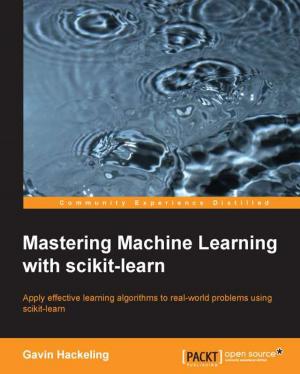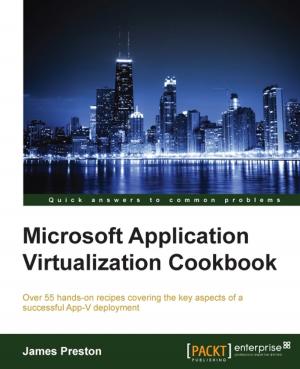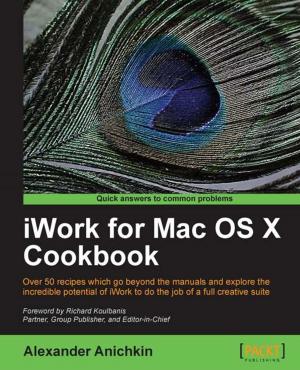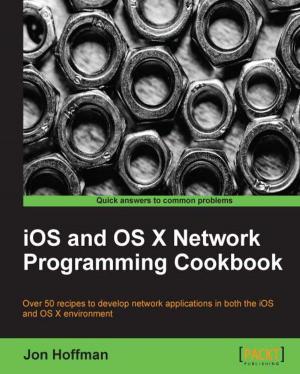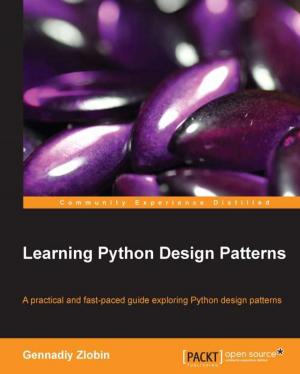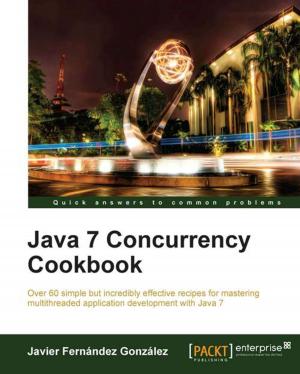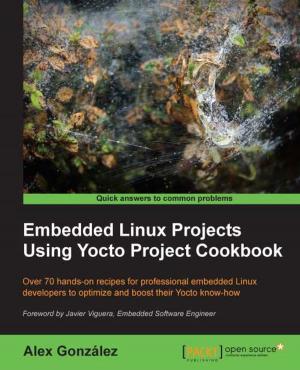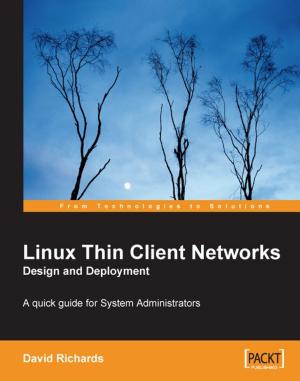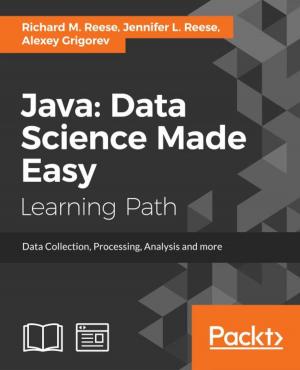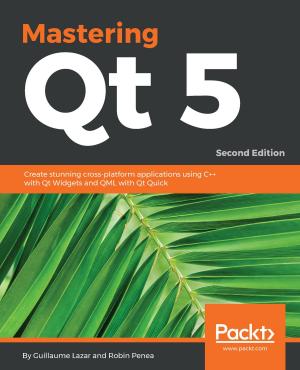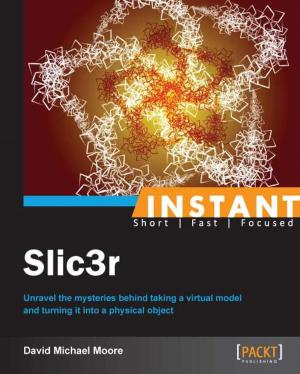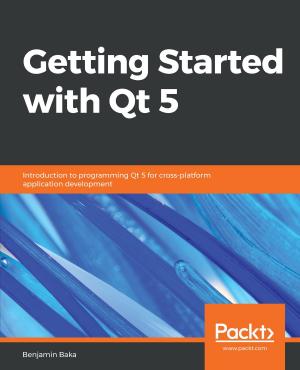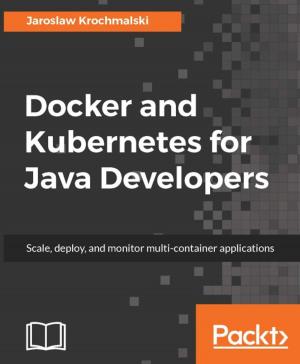MEAN Cookbook
Nonfiction, Computers, Programming, Programming Languages, CGI, JavaScript, Perl, VBScript| Author: | Nicholas McClay | ISBN: | 9781787288157 |
| Publisher: | Packt Publishing | Publication: | September 28, 2017 |
| Imprint: | Packt Publishing | Language: | English |
| Author: | Nicholas McClay |
| ISBN: | 9781787288157 |
| Publisher: | Packt Publishing |
| Publication: | September 28, 2017 |
| Imprint: | Packt Publishing |
| Language: | English |
Over 50 recipes to create full-stack high-performance web applications using pure JavaScript and the MEAN stack.
About This Book
- Architect a fully functional stand-alone web application, including the web server, database, and front-end web application
- Improve the performance and maintainability of your MEAN stack application with tips for configuration and optimization
- Highlights MEAN Stack best practices when working with your application
Who This Book Is For
If you are a JavaScript developer who wants to create high-performing, modern web applications with the MEAN stack, this is the book for you. Web developers familiar with some parts of the MEAN stack will find this a comprehensive guide to fleshing out the other technologies and skills they need to build all JavaScript web applications. Developers interested in transitioning from other web application stacks to an all-JavaScript environment will find a wealth of information about how to work in a MEAN stack environment.
To get the most from this book, you should have a general understanding of web servers and web applications. You are expected to have a basic understanding of running JavaScript, both in a web browser and outside it, using Node.js and the NPM package manager.
What You Will Learn
- Bootstrap a new MEAN stack web application using Node.js and Express
- Build a single-page application (SPA) with Angular and Angular-CLI
- Improve browser performance by optimizing your web application resources using Webpack
- Model complex JSON object relationships in MongoDB using Mongoose
- Debug all the layers of a MEAN stack application, including working with source maps
- Build Restful APIs using Express.js and JSON Web Token (JWT) for user authentication
- Use automated testing to improve the reliability and quality of your MEAN stack application
In Detail
The MEAN Stack is a framework for web application development using JavaScript-based technologies; MongoDB, Express, Angular, and Node.js. If you want to expand your understanding of using JavaScript to produce a fully functional standalone web application, including the web server, user interface, and database, then this book can help guide you through that transition. This book begins by configuring the frontend of the MEAN stack web application using the Angular JavaScript framework. We then implement common user interface enhancements before moving on to configuring the server layer of our MEAN stack web application using Express for our backend APIs. You will learn to configure the database layer of your MEAN stack web application using MongoDB and the Mongoose framework, including modeling relationships between documents. You will explore advanced topics such as optimizing your web application using WebPack as well as the use of automated testing with the Mocha and Chai frameworks. By the end of the book, you should have acquired a level of proficiency that allows you to confidently build a full production-ready and scalable MEAN stack application.
Style and Approach
This book is a guide of MEAN Stack specific solutions to common web application problems and includes in-depth guides for each layer of the application stack. Readers looking to upgrade their MEAN Stack web application will find recipes within to help them transition.
Over 50 recipes to create full-stack high-performance web applications using pure JavaScript and the MEAN stack.
About This Book
- Architect a fully functional stand-alone web application, including the web server, database, and front-end web application
- Improve the performance and maintainability of your MEAN stack application with tips for configuration and optimization
- Highlights MEAN Stack best practices when working with your application
Who This Book Is For
If you are a JavaScript developer who wants to create high-performing, modern web applications with the MEAN stack, this is the book for you. Web developers familiar with some parts of the MEAN stack will find this a comprehensive guide to fleshing out the other technologies and skills they need to build all JavaScript web applications. Developers interested in transitioning from other web application stacks to an all-JavaScript environment will find a wealth of information about how to work in a MEAN stack environment.
To get the most from this book, you should have a general understanding of web servers and web applications. You are expected to have a basic understanding of running JavaScript, both in a web browser and outside it, using Node.js and the NPM package manager.
What You Will Learn
- Bootstrap a new MEAN stack web application using Node.js and Express
- Build a single-page application (SPA) with Angular and Angular-CLI
- Improve browser performance by optimizing your web application resources using Webpack
- Model complex JSON object relationships in MongoDB using Mongoose
- Debug all the layers of a MEAN stack application, including working with source maps
- Build Restful APIs using Express.js and JSON Web Token (JWT) for user authentication
- Use automated testing to improve the reliability and quality of your MEAN stack application
In Detail
The MEAN Stack is a framework for web application development using JavaScript-based technologies; MongoDB, Express, Angular, and Node.js. If you want to expand your understanding of using JavaScript to produce a fully functional standalone web application, including the web server, user interface, and database, then this book can help guide you through that transition. This book begins by configuring the frontend of the MEAN stack web application using the Angular JavaScript framework. We then implement common user interface enhancements before moving on to configuring the server layer of our MEAN stack web application using Express for our backend APIs. You will learn to configure the database layer of your MEAN stack web application using MongoDB and the Mongoose framework, including modeling relationships between documents. You will explore advanced topics such as optimizing your web application using WebPack as well as the use of automated testing with the Mocha and Chai frameworks. By the end of the book, you should have acquired a level of proficiency that allows you to confidently build a full production-ready and scalable MEAN stack application.
Style and Approach
This book is a guide of MEAN Stack specific solutions to common web application problems and includes in-depth guides for each layer of the application stack. Readers looking to upgrade their MEAN Stack web application will find recipes within to help them transition.

